I’ve asked the opinion of my dear readers many times and it’s always an illuminating exercise. It’s interesting to get a feel for a direction others think my garden should go, even if you only know it from photos and descriptions.
But in the nearly 10 years this blog has been in existence, there has never been an issue as divisive as the great fence color debate. And I never saw it coming.
In fact, I wasn’t even planning asking for opinions because as long as I’ve been dreaming up the vegetable garden, I’ve been picturing a black fence. I love the combination of black with a variety of greens, hence why the raised beds are stained black and the gravel that surrounds them is dark gray.
So it was a spur-of-the-moment decision to ask people what color they thought it should be here as well as on Instagram and Facebook. And although the only options I gave were gray and black, several other suggestions, some intriguing—a deep, dark green—some not really up my alley—ehem, purple—also came in.

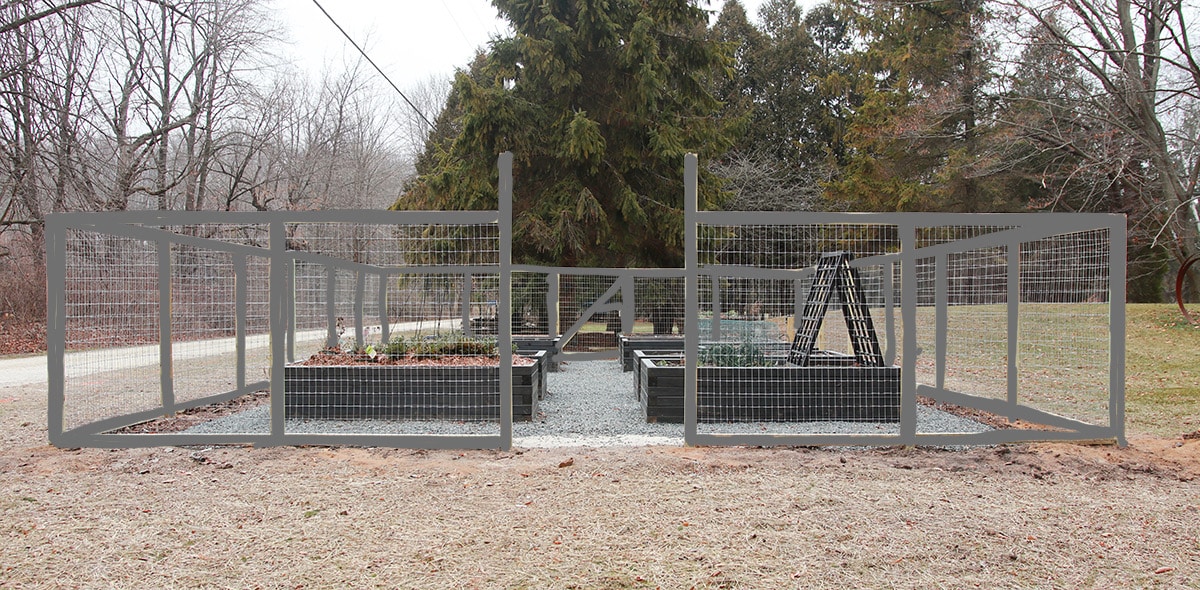
In fact so many people weighed in that I lost track of the official count, but not before realizing it was a pretty even split. There was great reasoning in both camps, including excellent points about how the gray might wear better than black and would show less dirt and further reinforcement to my existing thoughts about black. A garden designer whose work I very much admire even weighed in with a strong vote to black and honestly that pretty much sealed the deal.
My plan was only to stain the two gate posts this winter so that it would look OK when we added the arbor. So, black stain in hand (I went with a solid stain because I was afraid of a semi-transparent stain looking brown), I went about staining those posts black.
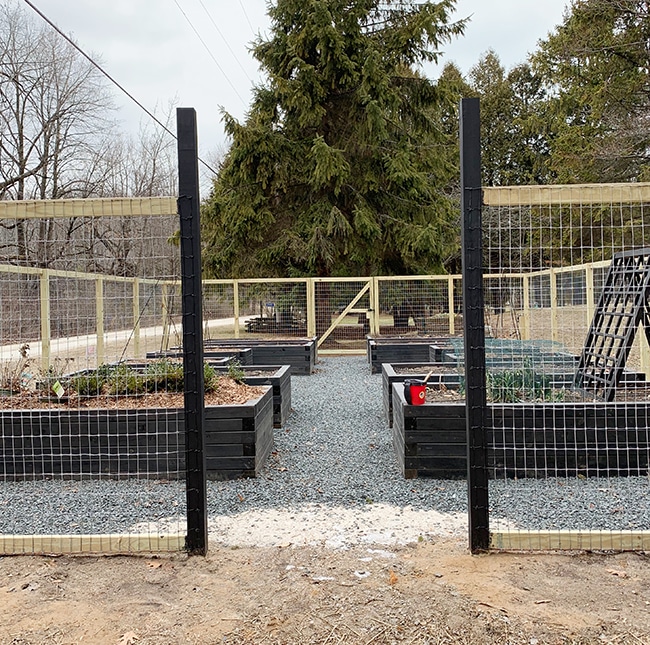
And then I lived with it for a few days and it started looking a little aggressive to me (this was something a few people mentioned in making a case for gray). I liked it on its own, but combined with the statement-making black raised beds, it just seemed like too much.
And then I randomly came across a photo of Brook Gianetti’s garden, which happens to have gray posts and be entirely fabulous. I’m a big follower of hers so I’m certain I’ve seen this photo before but somehow I had forgotten about it.
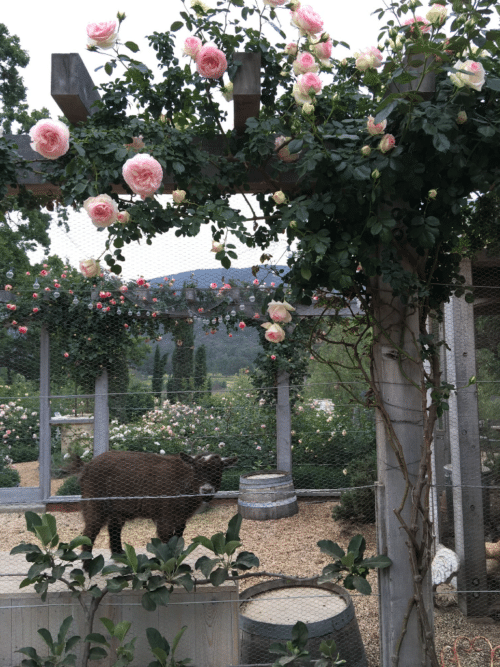
So back to the store for gray. And out I went to restain the posts. Although the stain could be applied down to 35 degrees, I was pushing my luck on the temperatures so I had to do it when the thermometer dictated, leaving little time to ponder the decision longer.
Except it wasn’t gray. It was brown. Or maybe taupe. But not gray, and definitely not gray compared to the cool gray stones. I still wasn’t positive if I wanted a black fence or a gray fence, but I knew damn well I didn’t want a taupe fence.
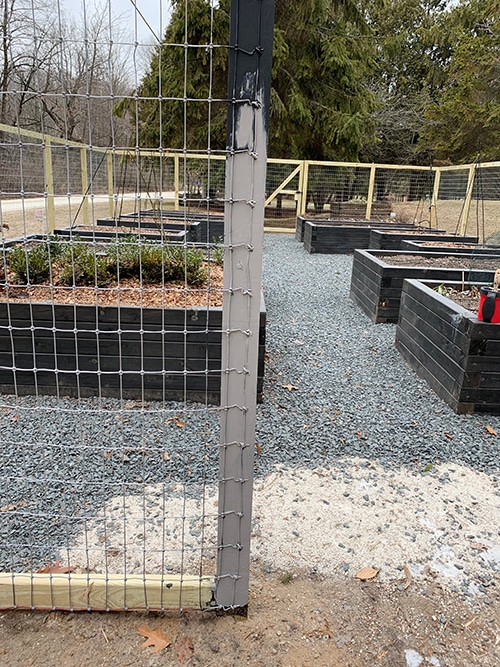
So yeah, I went back to the store. Have I mentioned that I’m buying this stain by the gallon? But yes, I bought a gallon of a different gray stain.
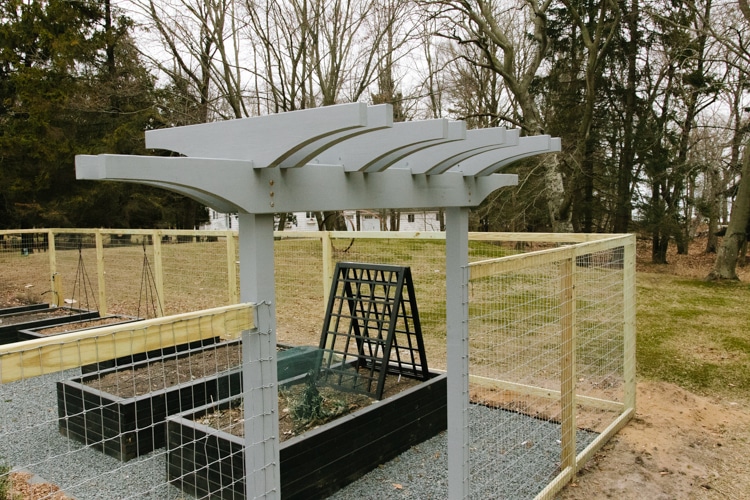
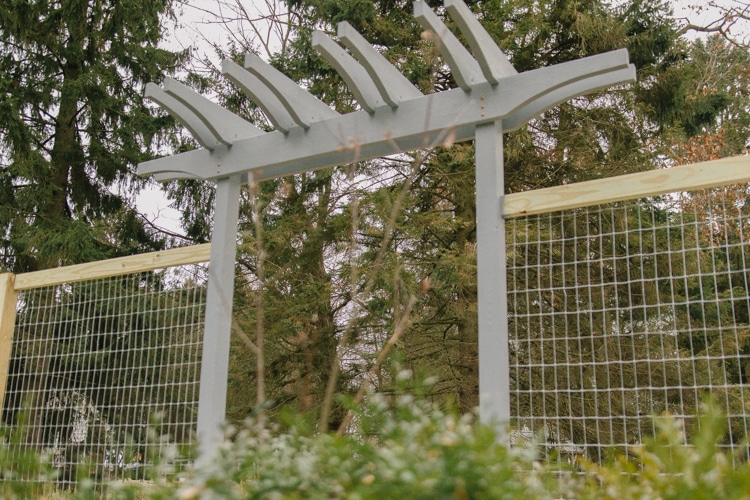
And, as you can see from yesterday’s tutorial on how we built the arbor, that’s where they ended up. So Team Gray gets the win. Of course I reserve the right to change my mind again. Goodness knows I have the stain for it.

7 Responses
I know a) this is an old post and b) you are not a purple fan, but I just found your beautiful site and have to weigh in. Fletcher Steele, one of the pre-eminent landscape architects of the first half of the 20th century, wrote about using purple for stanchions and chains and garden shed doors at Naumkeag, the Choate family estate in Stockbridge, MA. He picked a dark purple (almost an eggplant), saying that purple is the color of shadows, and recedes nicely into the landscape. And it’s so! I had a client (I’m also an LA) who built a screen fence to hide a bulkhead and some utilities; I mentioned the purple-as-shadow idea, and as the house was a beautiful yellow-cream stucco, the client was intrigued and took the risk. It’s gorgeous — not at all garish, very clean-looking, and complements the plantings beautifully. He used Benjamin Moore “Shadow” (2117-30)., which is a somewhat greyed-down purple. Take a look — you may find it broadens your color horizons!
I love the grey! It’s such a big choice to commit to! We just put a new fence in our yard and had to choose between grey and brown for the fence and I swear it took us weeks to decide. We finally went with grey (like the fence on this page) and I love it.
TEAM GRAY, FTW!!!!!
My BFF is a designer and has taught me the ways of the gray. The walls of my home are gray. The walls of my office are a different gray. Colors pop so beautifully off the gray….your garden will look amaze!
It all looks fabulous! Plus I am always so amazed at what you do yourself on these projects and all the tools you are comfortable using. That makes a big difference in what you can achieve in your garden. One of my big learning curves with Mark has been color. He’s the one who taught me there were warm and cool grays. I used to think gray was gray. No way!
You made the right decision. You want that fence to fade away not be brought to the fore with the black paint. Well done.
Funny what color can make people say and do.
I love the gray! It us understated and tasteful and it will help the wire fencing recede so you hardly notice it at all. I don’t think you want the fence to be the focal point. Your arbor still draws your attention because of it’s design. I enjoyed watching how you built it; you gave so many great tips! I can’t wait to see what other uses you find for all the other stains you bought. I’m sure they are coming.
The gray you chose is very similar to what we used on the pergola we built over our deck 24 years ago and we have never tired of it. We get so many compliments on it’s design and color. Another advantage to the gray is it needs re-painting less often. If it fades it isn’t as obvious as black would be.
Love it!! My husband got deck stain when I was out of town once and started staining. Fortunately he was smart enough to stop because, when I got home, I told him it was orange and we were NOT having an orange deck. And I don’t mean how people call 80s oak kitchens (got one of those) orange, this was ORANGE.